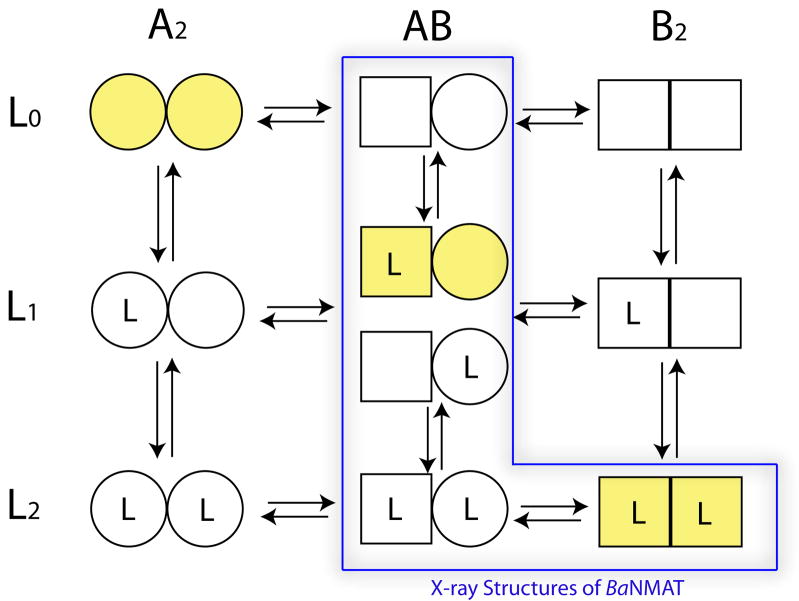Figure 9. General sequential model for molecular species in a protein composed of two subunits which undergoes a conformational change under the influence of bound ligand.
The model is adapted from Fig. 5 of Koshland and Neet (1968) and predicts both positive and negative cooperativity. It is assumed that each subunit can exist in two conformations and ligand (L) can bind to either subunit. Ligand L could be substrate, product, or other type of effector molecule. All species shown are potentially possible in the solution or crystalline state. Relative amounts of species will depend on the equilibrium constant of the conversion from A to B (K), the equilibrium constant for binding of L to conformation A (KL′) or B(KL), and strength of subunit interactions (KAA, KAB, KAB),. The simplest sequential model would assume exclusive binding to one conformation and no change in conformation in the absence of bound ligand, i.e. yellow-shaded molecular species. Cooperativity in the sequential model requires preferential binding to one conformation, e.g., B, a shift from A to B conformations with added ligand, and a change in subunit interactions, KAA different from KAB, KAB or both. The values for these equilibrium constants for solution may be different than those for the crystalline form of the protein. The negative cooperativity observed in the kinetic response of B. anthracis NMAT to the binding of substrates suggests it is capable of forming any of the species. The X-ray crystal structures of NMAT represent the AB (apoenzyme), L1AB (NaMN bound) and L2AB, L2B2 (NaAD bound) species of the enzyme. The product-bound, NaAD-NMAT complex, L2AB, is represented by the dimer within the trimeric, asymmetric unit of the unit cell, and the remaining monomer, which composes a symmetrical dimer generated by a 2-fold, crystallographic axis, represents the L2B2 species. The observed conformational species for NMAT in these studies are indicated by the blue box.

